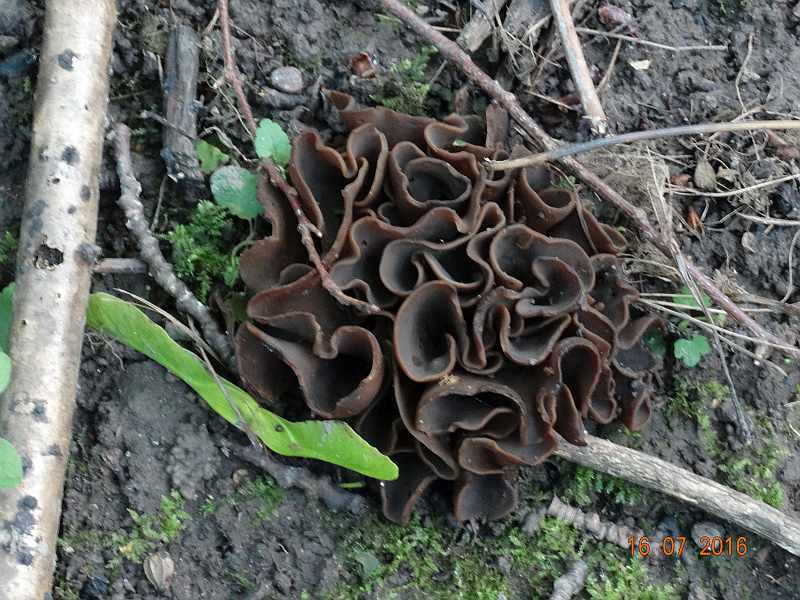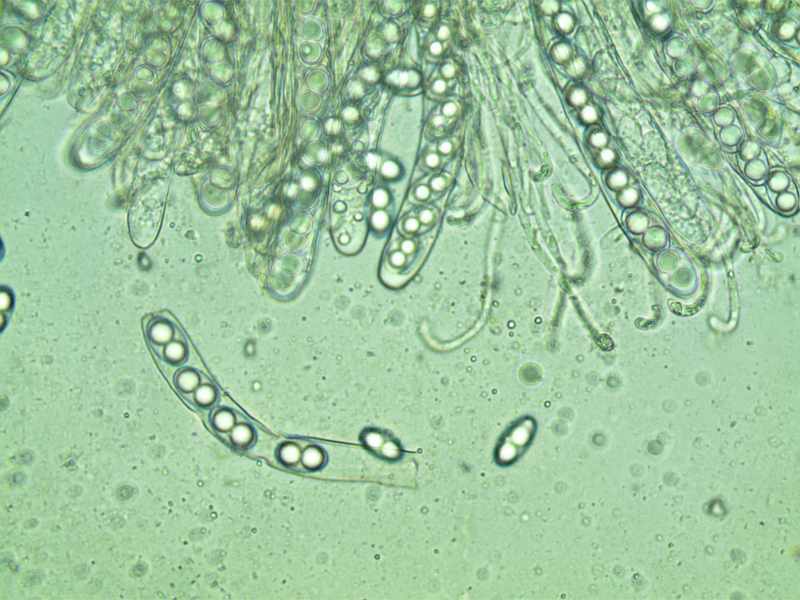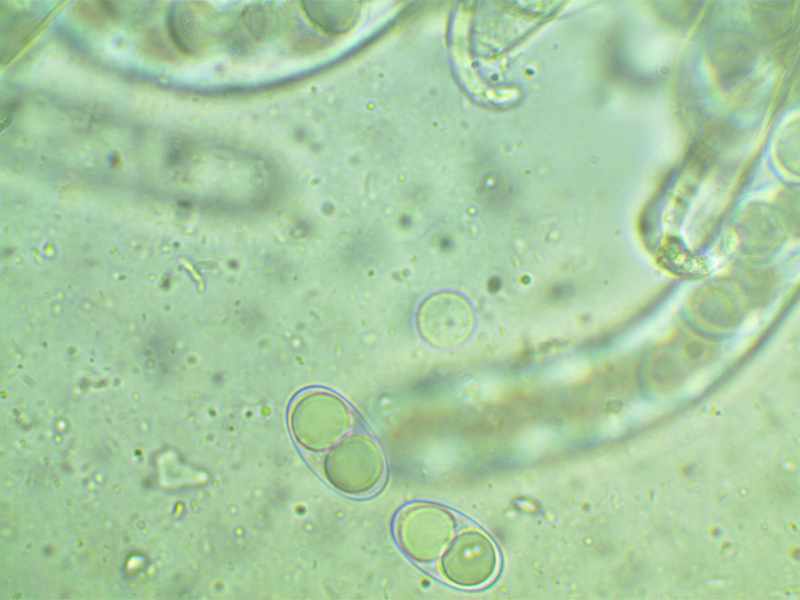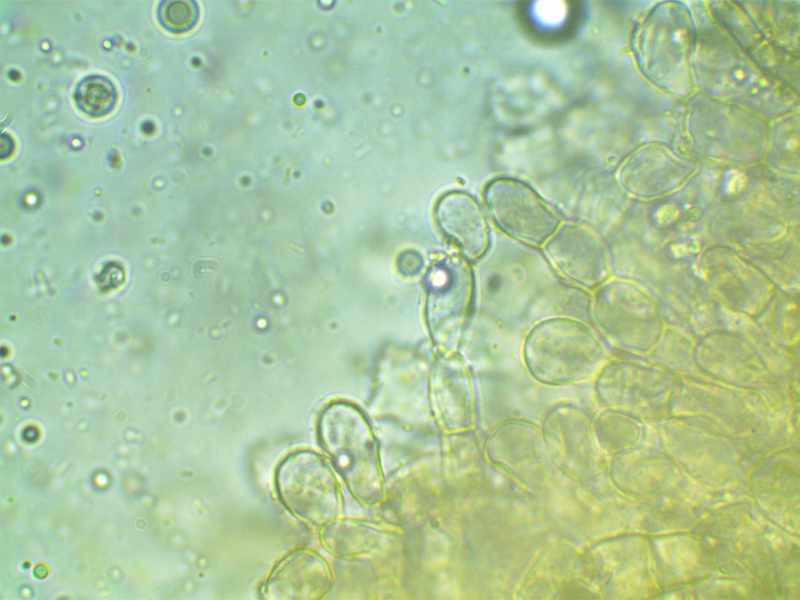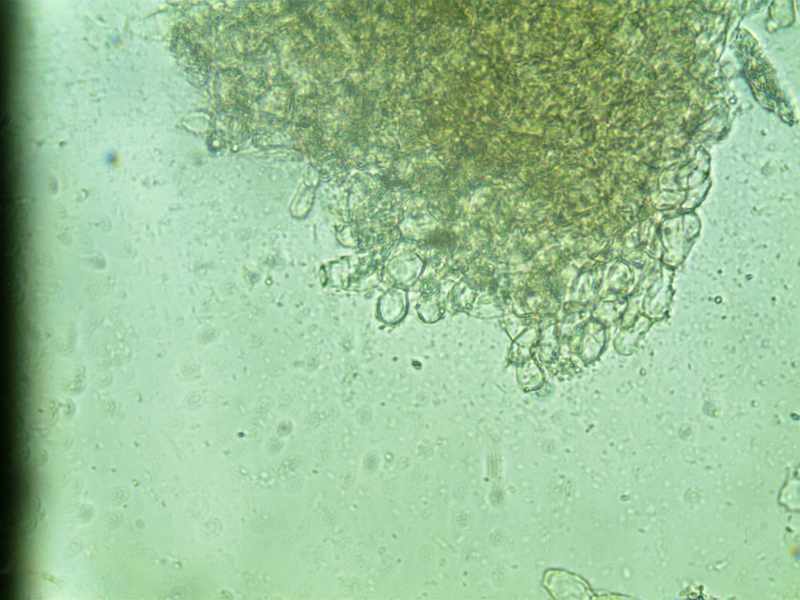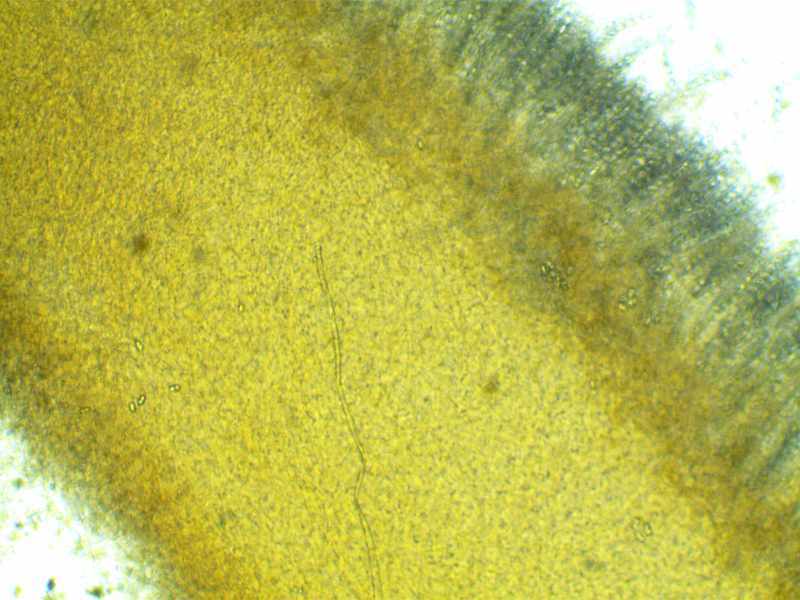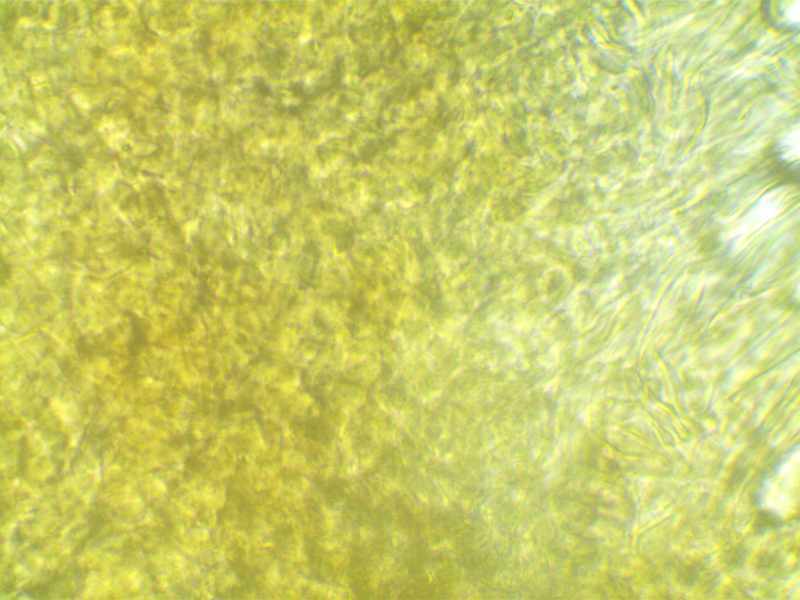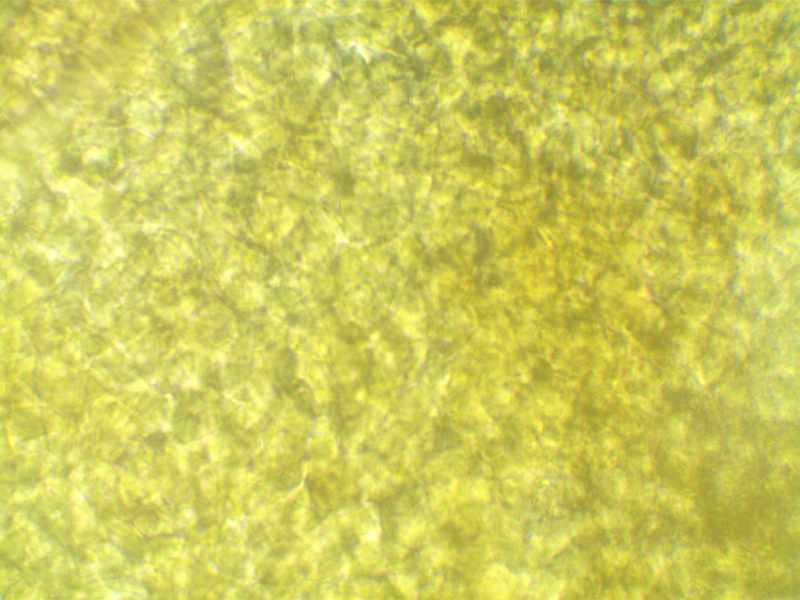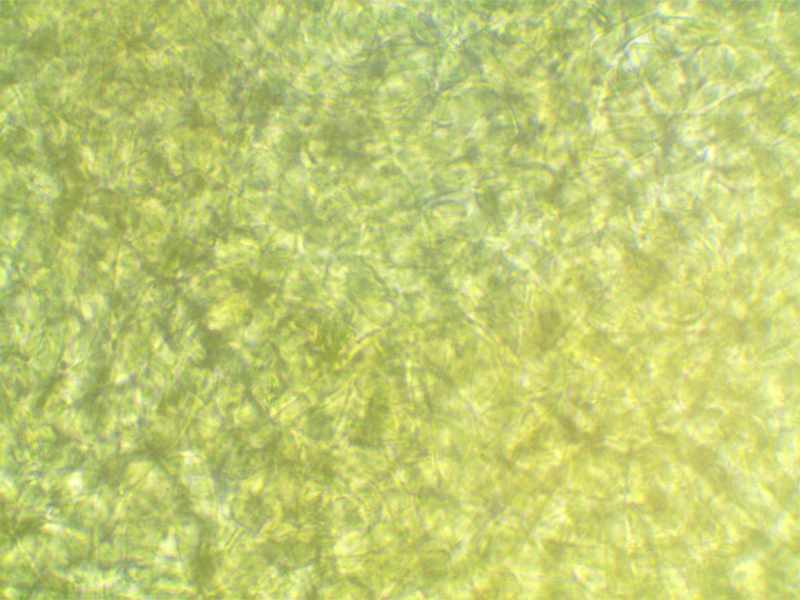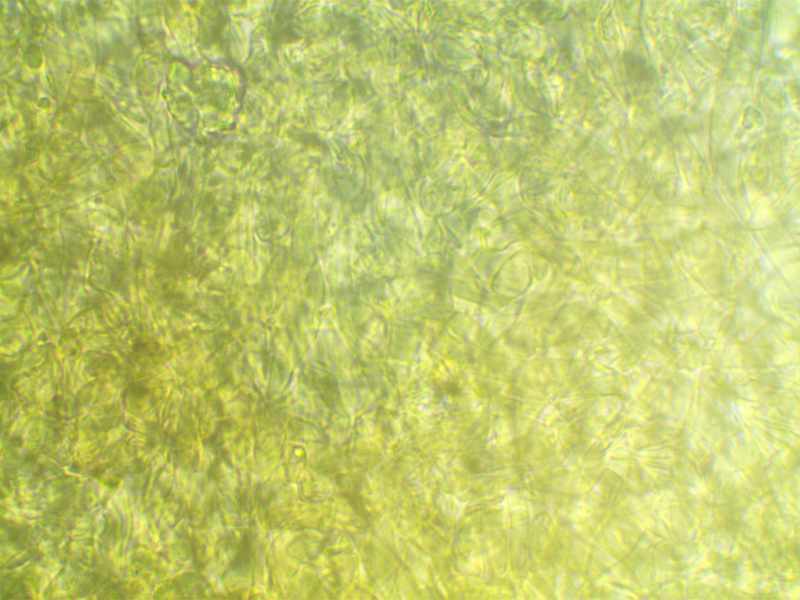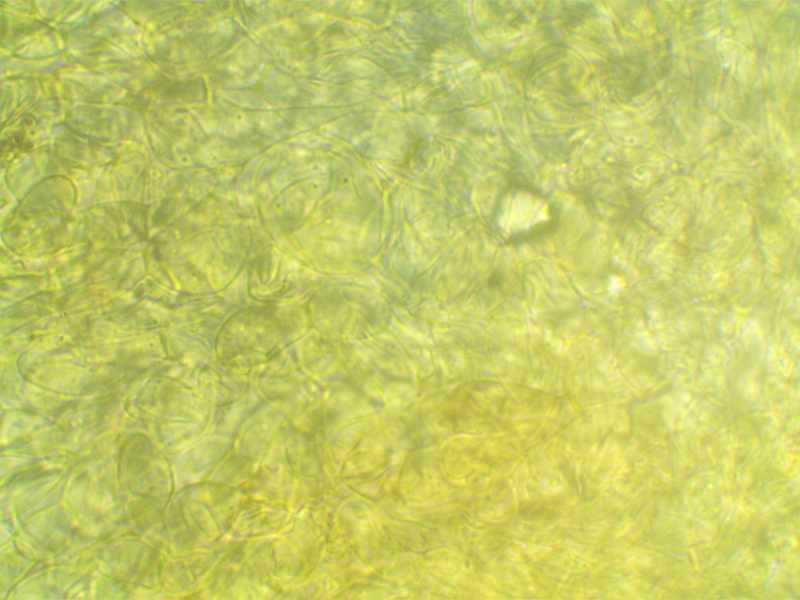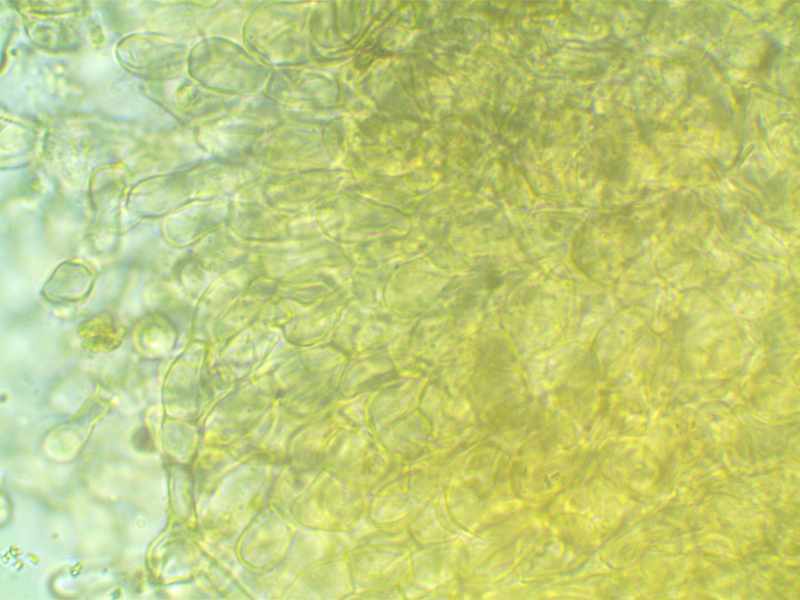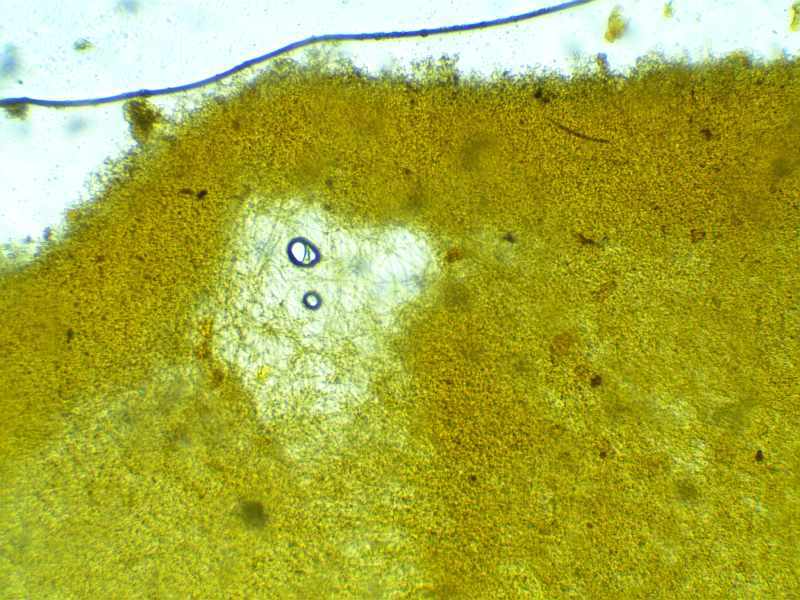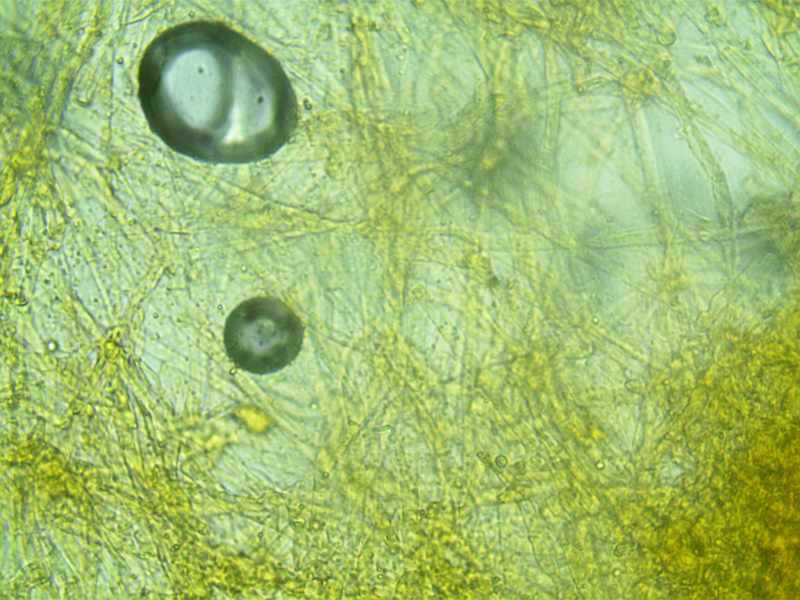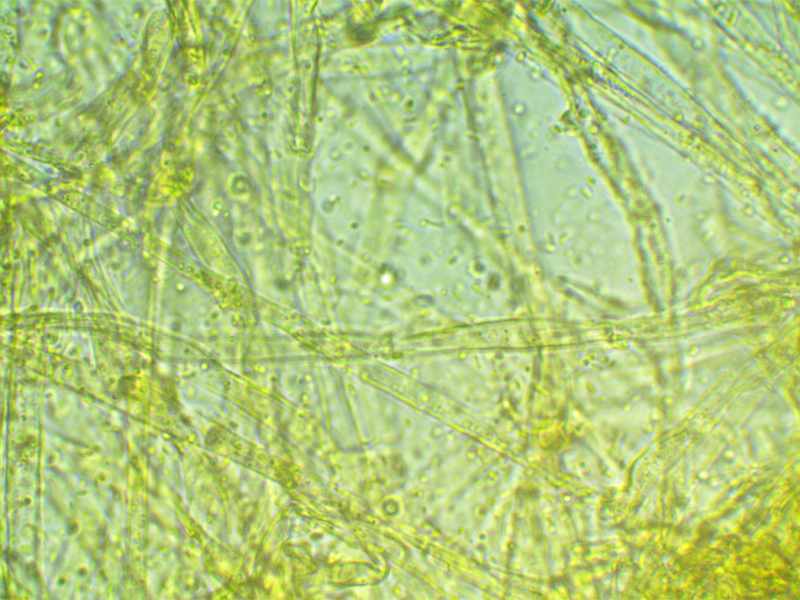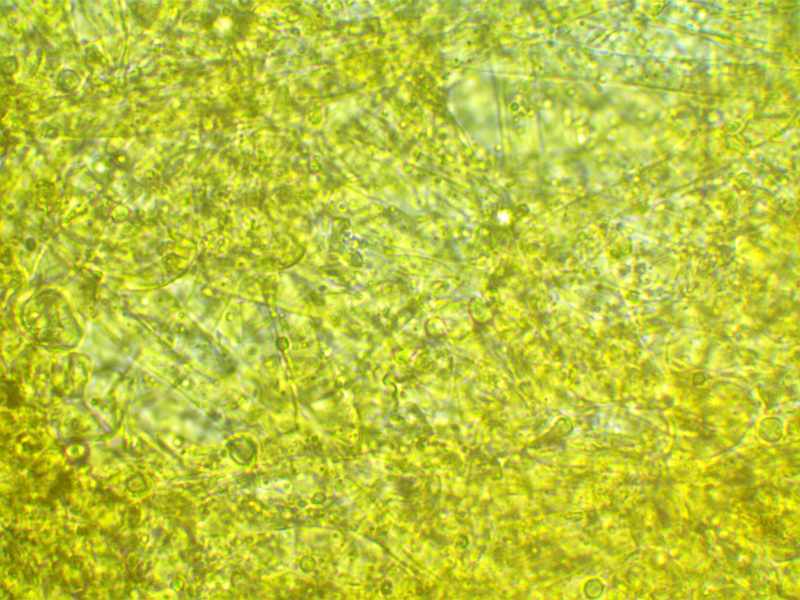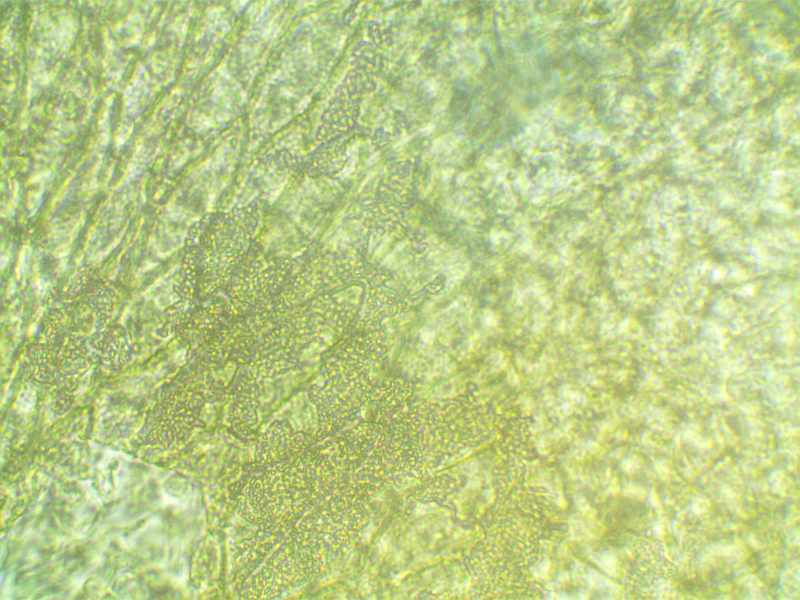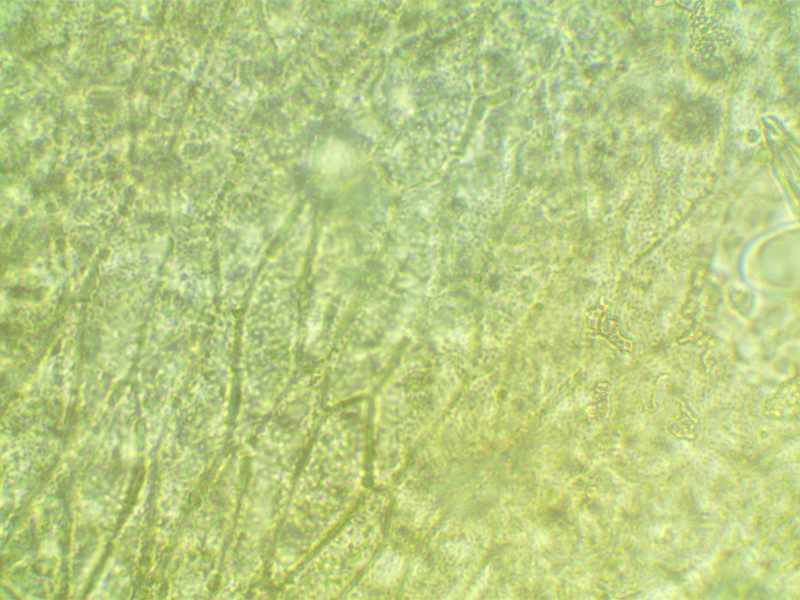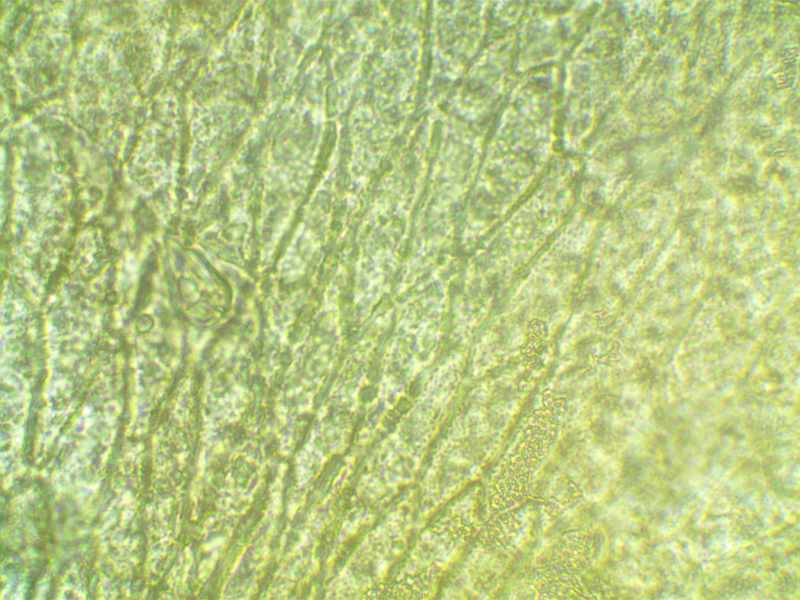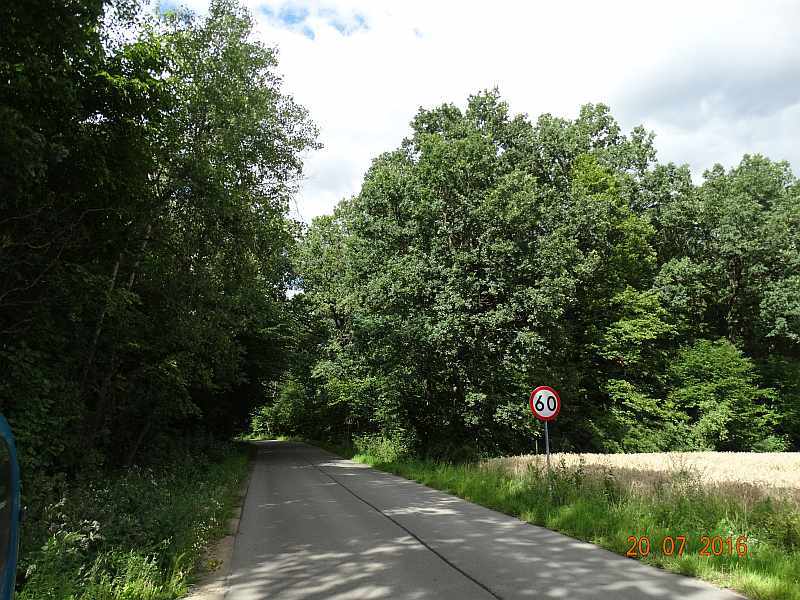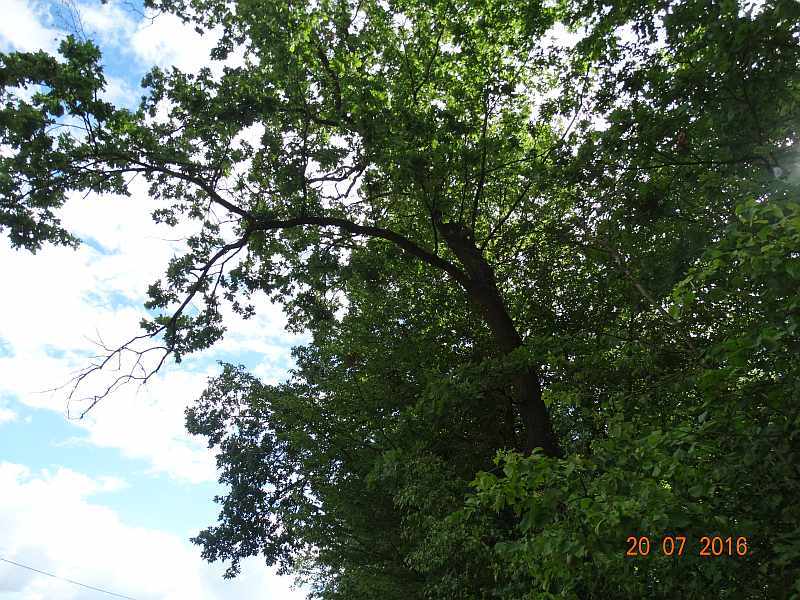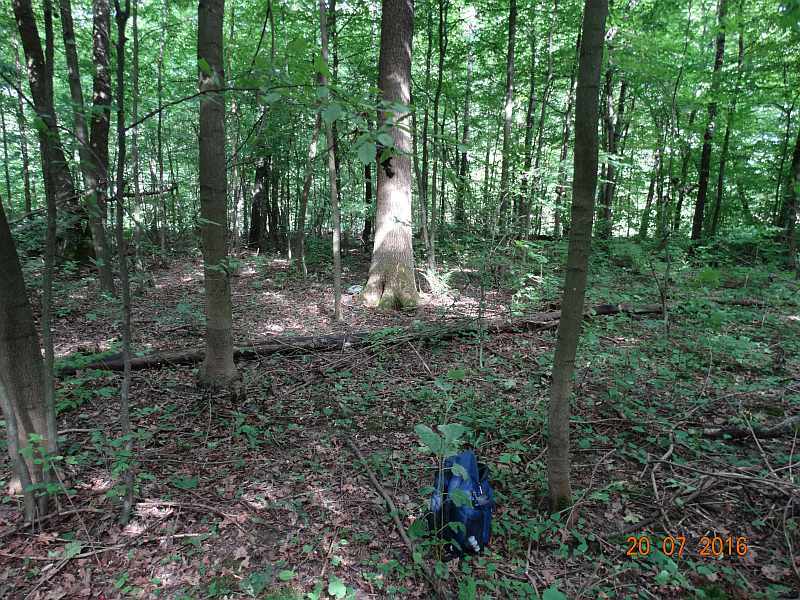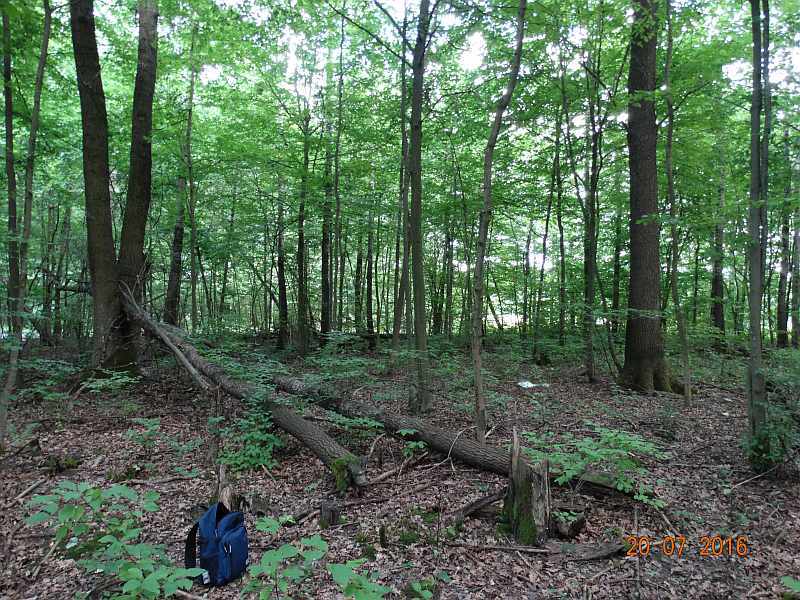Też bym chyba tak typował.
Nie znalazłem aby była podawana z Polski?
Pomierzyłbym jeszcze parafizy, worki i spojrzał na ectal excipulum.
Pomierzyłby znacznie więcej zarodników! Nie podałeś wielkości apotecjów, ale "na oko" na takie wyglądają.
Za "A monograph of Otidea (Pyronemataceae, Pezizomycetes)" 2015 I. Olariaga, N. Van Vooren, M. Carbone, K. Hansen
"3. Otidea platyspora Nannf., Ann. Bot. Fenn. 3: 317. 1966.
— Fig. 7
Holotype. Sweden, Uppland, Djursholm, Oct. 1951, A. Zander, Fungi Exs.
Suec. 3284 (UPS F-005428). Isotype (S-F88395) !
Misapplied names
– Otidea cochleata sensu Boudier, Icon. Mycol. livr. 21: n°. 461, pl. 329. 1908
(preliminary text with ‘circulaires’).
Apothecia caespitose, 60–70 mm high, 40–75 mm wide, initially ear-shaped, then soon expanding and becoming deeply cup-shaped, split, sessile or shortly stipitate. Hymenium initially yellowish brown (5C6, 5C7), pale greyish brown (5C3, 5C4) to dark brown (6F3–6F6), when bruised margin blackish, when dried brownish ochre (5B4, 5B5). Receptacle surface dark ochre brown (5D7, 5D8), slightly hygrophanous, in drying pale ochre brown (5B6), when dried yellowish brown (5C6, 5C7), sometimes wrinkled at the base, finely furfuraceous in the margin.
Warts absent. Stipe not well developed. Basal tomentum and mycelium whitish to pale brown (5A3). Spores broadly ellipsoid to oblong, rarely slightly inequilateral, with two large guttules, often with several smaller guttules, smooth, hyaline, 18–22 × (9.5–)10.5–12 um (Lm = 19.8–20.7 um, Wm = 10.9–11.6 um, Qm = 1.7–1.8; n = 6). Paraphyses curved to hooked, of the same width or slightly enlarged at apices, 2.5–3.5(–5) um wide, without notches, rarely with a slightly swollen area on the underside, when fresh containing small, refractive, light brownish yellow guttules; when dried tiny, light yellow granules.
Asci 168–213 × 14–19 um. Apothecial section 700–1700 um thick. Subhymenium 80–100 um thick, visible as a darker zone, cells cylindrical, densely arranged, with scarce yellowish brown resinous exudates at septa. Medullary excipulum of textura intricata, 550–1100 um thick, hyphae 3.5–10 um wide, sometimes slightly swollen, thin-walled, light yellowish brown. Ectal excipulum of textura angularis, 70–90 um, cells thin-walled, pale brown, 13–37 × 12–22 um. Surface with hyphoid hairs, 33–70 um long, of 4–7 ovoid to subglobose cells, constricted
at septa, 6–9 um wide, sometimes with a light brown matter.
Resinous exudates absent to scarce, pale brown, dissolving in MLZ. Basal mycelium of 3.5–4.5 um wide, hyaline to very pale brown hyphae, sometimes with oily refractive drops on the surface, sometimes with minute bipyramidal resinous exudates.
Specimens examined. Azerbaijan, Montes Talysh, in silva mixta, 14 Oct. 1962, E. Parmasto (UPS F-629452). – Denmark, East Jylland, Kammerherrens Ege, Moesgard Skov, S of Arhus, under Fagus and Quercus, 11 Sept. 2006, J. Vesterholt, JV06-656 (C). – France, Ain, commune de Saint-Benoit, foret d´Évieu, under Quercus robur, Carpinus betulus, Corylus avellana and Alnus glutinosa, 15 July 2011, F. Armada, NV 2011.07.04 (dupl. S). – Sweden, Uppland, Stockholm, Drottningsholm, under Quercus robur, 13 Sept. 2009, K. Hansen & I. Olariaga, KH.09.163 (S); Uppland, Stockholm, Solna, Karlbergsparken, garden with broadleaf trees, 29 July 2006, H.-G. Toresson (S-F248339); Uppland, Stockholm, Sanga, Svartsjö slott, under Quercus, Fagus and Corylus, 31 Aug. 2008, H. Kauffman, HK08046 (S); Uppland, Uppsala, mixed forest with Pinus sylvestris, Picea abies, Betula pendula and Quercus robur, 9 Oct. 2011, J.C. Zamora (BIO-Fungi 16391); Uppland, Uppsala, Hågadalen-Nåsten Nature Reserve, Predikstolen, under Corylus, Populus, Quercus and Picea, on rich ground, 6 Sept. 2010, K. Hansen & I. Olariaga, KH.10.183 (S).
Notes — Otidea platyspora is characterised by large, caespitose,
brown apothecia, blackening in bruised margins and large
spores. Macroscopically it resembles members of the O. alutacea complex, but these differ in the smaller spores. Otidea apophysata and O. daliensis have likewise brown apothecia and large spores, but can be distinguished by having even larger spores and smaller (up to 30 mm) apothecia (see further under
those species).
Otidea platyspora is a striking species with scarce records.
It was described from Sweden and has been reported from France (Boudier 1908, Nannfeldt 1966, Van Vooren & Armada 2011), the Netherlands (Maas Geesteranus 1967) and recently from Britain and Denmark (Parslow & Spooner 2013). We report
it as new from Azerbaijan and give additional records from Denmark and Sweden. Otidea platyspora appears to have been overlooked and is more widespread than thought previously.

Jest jeszcze jakaś O. indivisa, ale chyba ma mniejsze zarodniki i w sumie prawie nic o niej nie znalazłem np.jakieś foto?
Może jak by się lepiej wczytał w poniższy artykuł?
"On Otidea caligata, O. indivisa and o. platyspora (Discomycetes Operculatae)" 1966 J. A. N ANNFELDT (Uppsala)
http://www.ascomycete.org/Portals/0/PDF/Nannf011.pdf Jeszcze taka przejrzysta tabela z Persoonia 35, 2015: 148–165
"Species limits and relationships within Otidea inferred from multiple gene phylogenies" 2015 K. Hansen1, I. Olariaga1
http://www.repository.naturalis.nl/document/622099 
